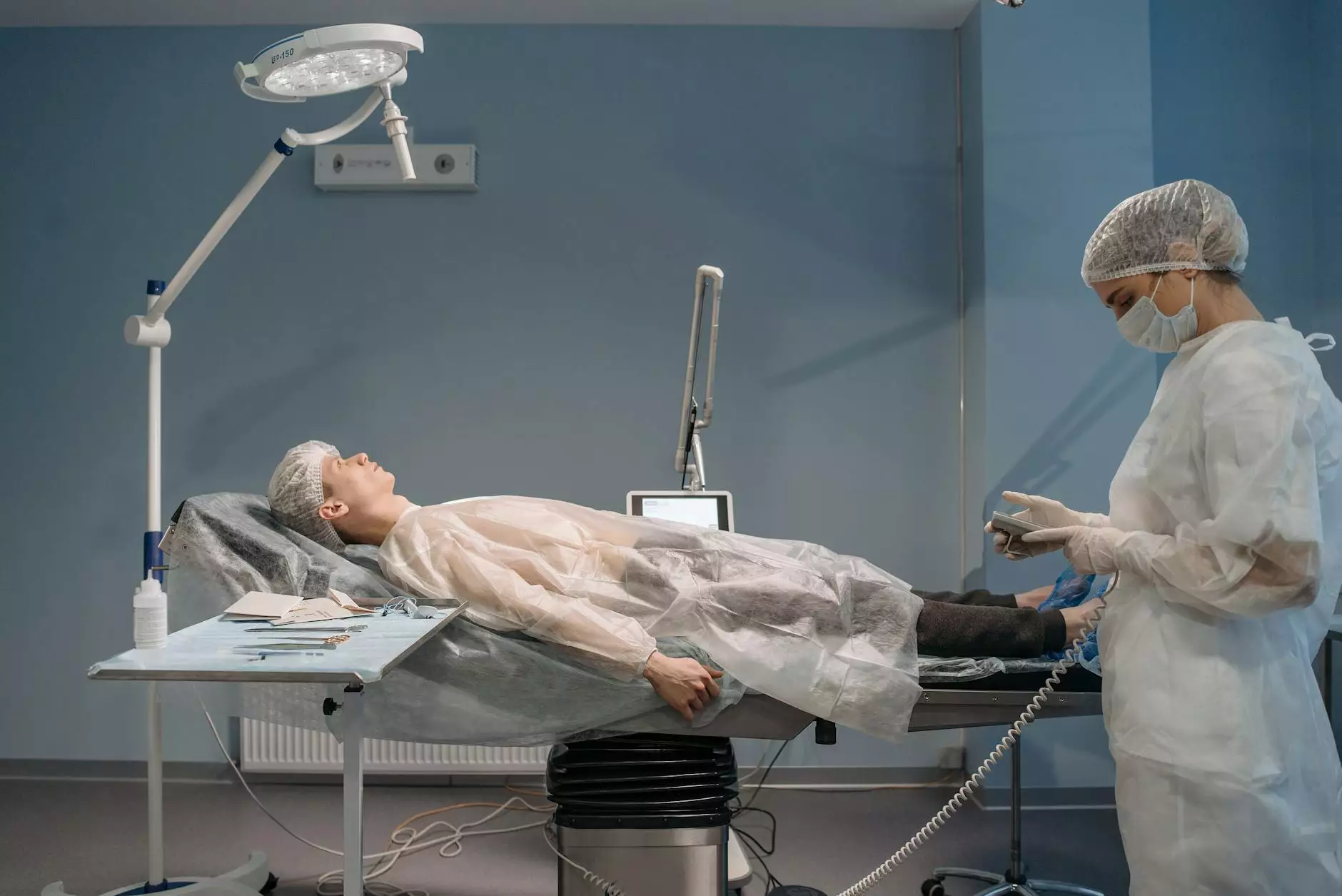Laparoscopic Bilateral Salpingo Oophorectomy: A Comprehensive Guide

The laparoscopic bilateral salpingo oophorectomy is a significant surgical procedure performed by specialized gynecologists, especially in the realm of women's health. As the medical field advances, this minimally invasive technique has become a preferred method for addressing various gynecological issues.
Understanding Laparoscopic Bilateral Salpingo Oophorectomy
The term laparoscopic bilateral salpingo oophorectomy refers to the surgical removal of both ovaries and fallopian tubes through small incisions, using a camera and specialized instruments. This procedure serves both diagnostic and therapeutic purposes, targeting conditions such as endometriosis, ovarian cysts, and certain types of cancers.
The Procedure Explained
In a typical laparoscopic bilateral salpingo oophorectomy procedure, the following steps are undertaken:
- Anesthesia: The patient is usually given general anesthesia, ensuring they remain unconscious and pain-free during the surgery.
- Incision Creation: Small incisions, generally between 0.5 to 1.5 cm, are made in the abdominal wall. These allow for the insertion of instruments and a laparoscope.
- Insertion of Laparoscope: A thin tube with a camera (the laparoscope) is inserted through one of the incisions. This device allows the surgeon to view the internal organs on a monitor.
- Removal of Ovaries and Fallopian Tubes: The surgical team carefully detaches the ovaries and fallopian tubes, which are then removed through the incisions.
- Closure: Once the surgery is complete, the incisions are closed with sutures or adhesive strips.
Indications for the Procedure
There are several medical conditions that may necessitate a laparoscopic bilateral salpingo oophorectomy, including:
- Ovarian cancer: In cases of malignant tumors, removal of the ovaries and fallopian tubes can halt the spread of cancer.
- Severe endometriosis: This painful condition often requires surgical intervention when it affects the ovarian region.
- Ovarian cysts: Large or problematic cysts may need to be excised along with the ovaries.
- Genetic predispositions: Women with BRCA gene mutations might opt for this procedure as a preventive measure against breast and ovarian cancers.
Benefits of Laparoscopic Surgery
The choice to use a laparoscopic technique for a bilateral salpingo oophorectomy presents numerous advantages over traditional open surgery:
- Minimally Invasive: Smaller incisions lead to less trauma and quicker recovery times.
- Reduced Pain: Patients often experience less postoperative pain, requiring fewer pain medications.
- Quicker Recovery: Many patients can return to normal activities within a week, as opposed to the longer recovery times associated with open surgery.
- Less Scarring: The small incisions result in minimal scarring compared to larger surgical cuts.
Risks and Considerations
Despite its advantages, laparoscopic bilateral salpingo oophorectomy is not without risks. Patients should be aware of:
- Infection: As with any surgical procedure, there is a risk of infection where the incisions are made.
- Bleeding: Although rare, internal bleeding can occur during or after the surgery.
- Damage to Surrounding Organs: There is a potential risk of inadvertently damaging nearby organs.
- Anesthesia Risks: Adverse reactions to anesthesia can also pose risks, depending on a patient's health background.
The Recovery Process
Postoperative recovery following a laparoscopic bilateral salpingo oophorectomy is typically swift. Patients are encouraged to follow these key recovery practices:
- Rest: Adequate rest is crucial to promote healing.
- Pain Management: Utilizing prescribed pain relief strategies will aid in comfort during recovery.
- Monitor for Complications: Keeping an eye out for signs of complications such as fever or excessive bleeding is crucial.
- Follow-Up Appointments: Attending all scheduled follow-up visits ensures proper tracking of recovery and healing.
Emotional and Psychological Support
In addition to the physical aspects of recovery, emotional wellness is equally important. Women may experience feelings of loss, especially when it comes to fertility. Seeking support through counseling or support groups can provide valuable assistance during this transitional phase.
Why Choose Dr. Seckin for Your Procedure?
When considering a laparoscopic bilateral salpingo oophorectomy, choosing the right healthcare provider is vital. Dr. Seckin is an expert in the field of gynecological surgery, known for:
- Extensive Experience: With years of specialized training, Dr. Seckin has performed numerous successful laparoscopic procedures.
- Patient-Centered Approach: Each patient receives individualized care, ensuring their unique needs and concerns are met.
- Advanced Technology: Utilizing the latest technological advancements enhances the safety and effectiveness of surgeries.
- Comprehensive Follow-Up Care: Dr. Seckin emphasizes the importance of postoperative care to ensure a healthy recovery.
Conclusion
In conclusion, the laparoscopic bilateral salpingo oophorectomy is a transformative surgical intervention for women suffering from various gynecological challenges. With its many noteworthy benefits, understanding the procedure's intricacies can empower women to make informed decisions about their health. By seeking assistance from expert providers like Dr. Seckin, women can navigate this health journey with confidence and care.
For more information about this procedure, or to schedule a consultation, visit drseckin.com today.








